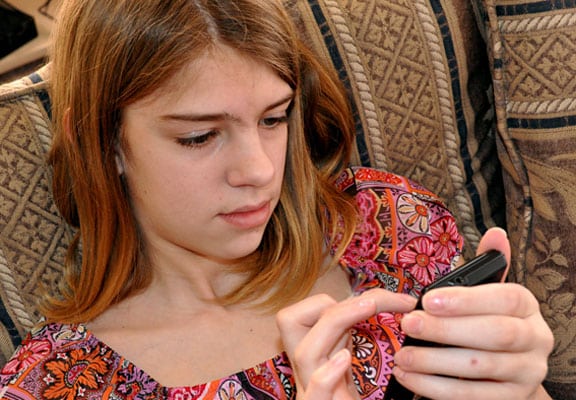

Credit: GoodNCrazy/ Carissa Rogers on Flickr, under Creative Commons (CC BY 2.0).
(WOMENSENEWS)– Almost 20 years ago, when I graduated with a mechanical engineering degree from the University of Buffalo, very few women were in the program.
Alarmingly, things haven’t changed much.
Women only account for 20 percent of bachelor degrees and only 25 percent of jobs in the science, technology, engineering and math (STEM) fields. This is partly because girls’ interest in these subjects peaks in middle school, only to be squashed later, according to a U.S. Department of Education study. But we have a major opportunity to reverse this trend through the use of mobile technology.
Unlike my experience growing up in the South Bronx, N.Y., and attending school in Harlem, young girls today have an advantage I never had — access to mobile technology. Kids, regardless of socioeconomic status, use mobile devices every day and they embrace technology for learning.
A recent Verizon Foundation survey on middle school students’ use of mobile technology shows that 1-in-3 students use smartphones and tablets to do homework. And students who use these mobile devices in the classroom are more interested in STEM subjects. The survey also revealed that Hispanic and African American students are using smartphones for homework more than their Caucasian peers.
These results reinforce the need for us to really think about our efforts to truly engage students in STEM, especially young girls and those in underserved areas. That is why we created an App Challenge to engage all students to create apps for mobile devices. Through this nationwide mobile app design competition, we reached thousands of middle and high school students from major cities to rural areas and encouraged them to apply mobile technology and STEM to solve real-world problems.
Correct Premise
The premise of the competition was correct. Over half of the winners were girls and there was even one all-female team.
The students came up with a variety of exciting app concepts. The all-girls Study Buddy team built an app that helps students manage their time and improve their study habits. Girls were also an integral part of other teams, such as the one behind the Chow Checker, an app that alerts users of food ingredients that can cause an allergic reaction. And the Quest Math team’s app helps kids develop better math skills by playing a fun Greek mythology-themed game.
Sherly Quezada, a sixth grade Quest Math team member from a very underserved area in the Bronx, said that because of the competition, she feels that her future has been decided for her and she now wants to become an app developer. Quezada is a powerful example of how technology can be a career game changer for students.
We need to provide more of these opportunities to young women today to not only capture but also to keep their interest in STEM. Projects like this give girls the confidence to know that science, math and technology are not just for boys. By the time they reach college, they are not intimated by pursuing STEM degrees.
Parents and teachers are instrumental in furthering these efforts to reach and engage young girls in STEM. We should re-think the next time we tell her to turn off her smartphone or put away her tablet. Mobile devices when used for learning are proving to be an excellent way to level the playing field between girls and boys and to empower students from even the most underserved communities to think STEM — and to think big.
Would you like to Send Along a Link of This Story? https://womensenews.org/story/women-in-science/130703/look-at-what-stem-girls-can-do-mobile-apps

